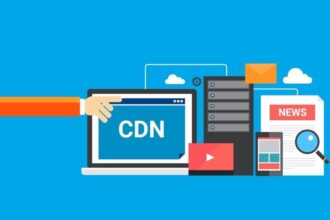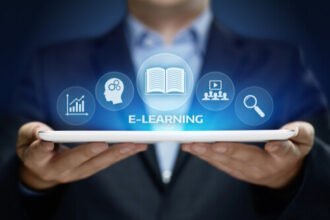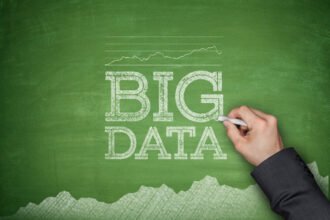 Today if you ask me what the most disruptive and impactful technology “pillars” are I’d answer much like you’d expect; cloud, mobile, social and big data. In fact I was on a panel at the CRM Evolution conference a couple of weeks ago discussing exactly this topic.
Today if you ask me what the most disruptive and impactful technology “pillars” are I’d answer much like you’d expect; cloud, mobile, social and big data. In fact I was on a panel at the CRM Evolution conference a couple of weeks ago discussing exactly this topic.
 Today if you ask me what the most disruptive and impactful technology “pillars” are I’d answer much like you’d expect; cloud, mobile, social and big data. In fact I was on a panel at the CRM Evolution conference a couple of weeks ago discussing exactly this topic. If I dug a little deeper, which I did almost a year ago in this post, I could add in several other disrupters. All of these things are valid disruptions and are causing changes in businesses every day. We’re consuming applications differently, learning to deal with customers, partners and employees differently, opening up enterprise resources to mobile access and finding creative ways to use the massive amounts of data we are creating every second of every day. If you read this blog often, you know I talk about these things regularly.
Today if you ask me what the most disruptive and impactful technology “pillars” are I’d answer much like you’d expect; cloud, mobile, social and big data. In fact I was on a panel at the CRM Evolution conference a couple of weeks ago discussing exactly this topic. If I dug a little deeper, which I did almost a year ago in this post, I could add in several other disrupters. All of these things are valid disruptions and are causing changes in businesses every day. We’re consuming applications differently, learning to deal with customers, partners and employees differently, opening up enterprise resources to mobile access and finding creative ways to use the massive amounts of data we are creating every second of every day. If you read this blog often, you know I talk about these things regularly.
I started thinking last weekend though, that maybe I’m not stepping back far enough…or perhaps I should say, I’m not looking far enough ahead, to see how these disrupters will actually change our lives and businesses. So that’s what I’m going to do, spend a few minutes thinking about some of the possible outcomes and downstream business changes that could result from our current environment of change. As a framework let’s look at the impacts across four dimensions, people, culture, organization and technology.
Technology
Automation: Automating manual / production processes has been an ongoing effort for many years. In the information oriented side of business though, often people are the key to making the process work. As business intelligence / analytics software and automation software both evolve the ability to automate what in the past was exception processing done by people is rapidly increasing. At first this automation was aimed at mundane and repetitive tasks but increasingly that bar is moving up. Big data and the ability to use big data to support decision making is increasing the pace of change. Social data and the increasing capabilities of socialytic systems to provide behavioral modeling to the automation process broadens the types of tasks that can be automated. The more we can automate tasks and raise the level of those automated tasks, the more we can free up people to focus on higher value activities.
Computational power / AI: Computational power is increasing at a massive pace and continues to accelerate. The ability to interconnect and utilize this power in grids is also advancing at an incredible pace. Recent experiments have even shown that it’s possible to create ad hoc wireless grids out of the computing power in growing numbers of pockets…the smartphone. Couple that with the explosion of connected devices, or the Internet of things and we are increasingly becoming a large, connected programmable system. The recent demonstrations of IBM’s Watson starts to show what artificial intelligence and natural language processing can accomplish and offer glimpses into the next evolution of the computer as an interactive tool.
Hyper-connectivity (Internet of things, people-centric networks, mobility): The world is becoming an interconnected network as the Internet expands outside of the web and into smart “things”. Connectivity or as I’ve often referred to it, hyper-connectivity, driven by an increasingly mobile society that is always on, has far reaching business consequences. In a real time, always connected world, personal and professional blend or merge and the very definitions of workplace changes. The addition of the social web is creating a people-centric, interconnected network that is supported by real time access to data, content, and computational tools that change decision making and interactions. Business itself is moving to a business model where connectivity leads to a broad business network of partners behaving as an ecosystem. This ecosystem is the business of the future.
New Media: Media is one of the most obvious areas of disruption created by the social web and particularly the new tools for generating content like blogs, microblogs and social networks. From creation through distribution and to consumption, media has experienced a radical shift. Our ability to get information in real time as it happens is evidenced by every new news event. this week both the fall of Kadafi and the East Coast earthquake broke first on social channels. In fact, yesterday while the traditional news media was fixed on the aftermath of the Kadafi story, Twitter once again became the reporting medium for the earthquake. Media literacy in this new environment is critical and the channels and methods are constantly evolving. The new workforce will be required to understand and use these new communication channels.
Content Centric Networks: I wrote about this new networking development recently here. Since this is a recent post I won’t recap it for you but I will say that as the nature of the network changes we move closer to the organic business network. Our old network paradigms don’t support the new ways we need to work and the real time immediate access to content that will be required to support that work. CCN is one interesting development that might address this.
Organizations
Organic Business Networks: Another topic I’ve written about recently, is a critical part of the socialization of business. In fact, I think that social business is the “what” and organic business network is the “how” in the equation. Extending the connectivity and the business model outside of established boundaries has broad impacts on organization, roles, and even value creation.
Value creation: Business model innovation is as compelling a business differentiator as product innovation. The Internet has created the opportunity to create value in a business in some very unique ways. In traditional business value creation was generally straight forward, a product or service was delivered to a customer and the customer paid for the item or service. In the Internet age this is not always the case, indirect value creation is common with ad supported business models as the leading example. Google, a $30+B business, generates almost none of its revenue in a direct value creation model. Freemium, a business model that mixes ad supported products with subscription models, or indirect and direct value creation in one business is also gaining a lot of traction. In the future businesses will be able to move value creation around in the business model to optimize revenue and increase their competitive standing.
Structure: Organizational structure is under a lot of pressure as social starts to change the culture of many businesses. In a knowledge sharing business environment where everyone is capable of contributing the nature of leadership and management changes. I wrote about this here. Information businesses feed and grow on information sharing and the old top down models are not consistent with the new ways of doing business. Flat structures where everyone is connected and contributing are more productive and leverage the new technologies of collaboration. Even the nature of employee definitions can and are changing with an increase in contract or job sharing situations.
Culture
People-centric enterprise: People-centric enterprises are the backbone of the new social business. Collaboration is really about facilitating the connections between people, not about sharing or managing files. The network become a connected workforce that includes customers, partners and suppliers in an ever evolving relationship. Co-creation of value depends on this people centricity.
Work: Thing you do, not the place you go: The very nature of work is changing and the concept of separate private and professional lives seems to be disappearing. With the hyper-connected, always on, real time nature of work its difficult to distinguish between the two. Mobile tools enable work anywhere, anytime.
People
Increasing life expectancy: While this may not seem like a work topic is most certainly will change many things about business. People will have to develop life long learning practices and change old expectations of careers and retirement. As the life expectancy increases so does the length of careers, which has impacts on both the individual and also on peers. New types of advancement and rewards will be needed as experienced workers persist in positions much longer. Businesses will have much greater opportunity to leverage experience but will also need new ways of utilizing and leveraging it along with ways of balancing new innovation with the value of that experience.
The brand of me: The social web, social media and the ability of individuals to have a public voice is changing the meaning of personal brand. The ability of an individual to build a public brand has changed with the emergence of new communication and media channels. In the new business environment the business brand must find balance with the personal brands of its employees. The business becomes the umbrella brand and each individual chooses to associate the power of their own brand with that overarching corporate brand. The respective networks merge for the period of time of the association, and each gains from the relationship as long as it lasts. Individuals own their own networks but the merged network grows for both the corporate and individual brand. This is a very different concept of the interaction of personal and corporate brand and has many implications for both businesses and individuals.
I’m sure there are many other changes ahead of course, but this is at least a start. The next several years will be years of deep change for businesses and individuals, but there are a lot of interesting opportunities created in the changes. What did I miss?








